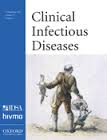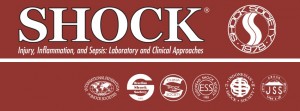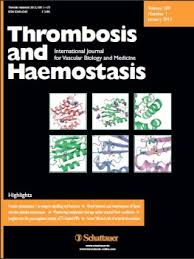Biblio du mois : Février 2018
Et voici la nouvelle biblio du mois avec encore une fois une multitude d’études intéressantes.
Les plus grandes revues ont été inspirées ce mois-ci par de la cardio (encore et toujours), de l’infectiologie (pour notre plus grand plaisir) et surtout de la thrombose sous toutes ses coutures avec une implication possible avec la Morphine … Encore la faute de l’Anesthésiste ?
On citera également l’étude REDUCE et le Tuto du NEJM sur la pose de péridurale. On pourra discuter au prochain afterbloc de la prophylaxie anti-néphropathie liée aux produits de contraste et anti-thrombotique également.
Et pour les moins fêtards, de belles revues (notamment sur l’immunodépression) vous attendent, ainsi que de nouvelles recommandations internationales sur la prise en charge du SDRA. On vous sollicitera bientôt votre avis concernant le Machine Learning (évènement formation/update en préparation !)
Attention bientôt la 50ème biblio de l’AJAR : tenez-vous prêt !
En attendant : RDV à la fête du 50ème Afterbloc de l’AJAR Paris qui s’annonce haut en couleur !
Bon anniversaire aux poissons 😉
Prophylaxie anti-thrombotique après chirurgie de hanche : l’aspirine suffit ?
Anderson et al., NEJM, 2018
http://www.nejm.org/doi/full/10.1056/NEJMoa1712746?query=featured_home
DOI: 10.1056/NEJMoa1712746
Background
Clinical trials and meta-analyses have suggested that aspirin may be effective for the prevention of venous thromboembolism (proximal deep-vein thrombosis or pulmonary embolism) after total hip or total knee arthroplasty, but comparisons with direct oral anticoagulants are lacking for prophylaxis beyond hospital discharge.
Methods
We performed a multicenter, double-blind, randomized, controlled trial involving patients who were undergoing total hip or knee arthroplasty. All the patients received once-daily oral rivaroxaban (10 mg) until postoperative day 5 and then were randomly assigned to continue rivaroxaban or switch to aspirin (81 mg daily) for an additional 9 days after total knee arthroplasty or for 30 days after total hip arthroplasty. Patients were followed for 90 days for symptomatic venous thromboembolism (the primary effectiveness outcome) and bleeding complications, including major or clinically relevant nonmajor bleeding (the primary safety outcome).
Results
A total of 3424 patients (1804 undergoing total hip arthroplasty and 1620 undergoing total knee arthroplasty) were enrolled in the trial. Venous thromboembolism occurred in 11 of 1707 patients (0.64%) in the aspirin group and in 12 of 1717 patients (0.70%) in the rivaroxaban group (difference, 0.06 percentage points; 95% confidence interval [CI], −0.55 to 0.66; P<0.001 for noninferiority and P=0.84 for superiority). Major bleeding complications occurred in 8 patients (0.47%) in the aspirin group and in 5 (0.29%) in the rivaroxaban group (difference, 0.18 percentage points; 95% CI, −0.65 to 0.29; P=0.42). Clinically important bleeding occurred in 22 patients (1.29%) in the aspirin group and in 17 (0.99%) in the rivaroxaban group (difference, 0.30 percentage points; 95% CI, −1.07 to 0.47; P=0.43).
Conclusions
Among patients who received 5 days of rivaroxaban prophylaxis after total hip or total knee arthroplasty, extended prophylaxis with aspirin was not significantly different from rivaroxaban in the prevention of symptomatic venous thromboembolism.
Prévention de néphropathie liée aux produits de contraste : Bicar et NAC inutiles ?
Weisbord et al., NEJM, 2018
http://www.nejm.org/doi/full/10.1056/NEJMoa1710933
DOI: 10.1056/NEJMoa1710933
Background
Intravenous sodium bicarbonate and oral acetylcysteine are widely used to prevent acute kidney injury and associated adverse outcomes after angiography without definitive evidence of their efficacy.
Methods
Using a 2-by-2 factorial design, we randomly assigned 5177 patients at high risk for renal complications who were scheduled for angiography to receive intravenous 1.26% sodium bicarbonate or intravenous 0.9% sodium chloride and 5 days of oral acetylcysteine or oral placebo; of these patients, 4993 were included in the modified intention-to-treat analysis. The primary end point was a composite of death, the need for dialysis, or a persistent increase of at least 50% from baseline in the serum creatinine level at 90 days. Contrast-associated acute kidney injury was a secondary end point.
Results
The sponsor stopped the trial after a prespecified interim analysis. There was no interaction between sodium bicarbonate and acetylcysteine with respect to the primary end point (P=0.33). The primary end point occurred in 110 of 2511 patients (4.4%) in the sodium bicarbonate group as compared with 116 of 2482 (4.7%) in the sodium chloride group (odds ratio, 0.93; 95% confidence interval [CI], 0.72 to 1.22; P=0.62) and in 114 of 2495 patients (4.6%) in the acetylcysteine group as compared with 112 of 2498 (4.5%) in the placebo group (odds ratio, 1.02; 95% CI, 0.78 to 1.33; P=0.88). There were no significant between-group differences in the rates of contrast-associated acute kidney injury.
Conclusions
Among patients at high risk for renal complications who were undergoing angiography, there was no benefit of intravenous sodium bicarbonate over intravenous sodium chloride or of oral acetylcysteine over placebo for the prevention of death, need for dialysis, or persistent decline in kidney function at 90 days or for the prevention of contrast-associated acute kidney injury.
Ablation de FA chez les insuffisants cardiaques ?
Marrouche et al., NEJM, 2018
http://www.nejm.org/doi/full/10.1056/NEJMoa1707855
DOI: 10.1056/NEJMoa1707855
Background
Mortality and morbidity are higher among patients with atrial fibrillation and heart failure than among those with heart failure alone. Catheter ablation for atrial fibrillation has been proposed as a means of improving outcomes among patients with heart failure who are otherwise receiving appropriate treatment.
Methods
We randomly assigned patients with symptomatic paroxysmal or persistent atrial fibrillation who did not have a response to antiarrhythmic drugs, had unacceptable side effects, or were unwilling to take these drugs to undergo either catheter ablation (179 patients) or medical therapy (rate or rhythm control) (184 patients) for atrial fibrillation in addition to guidelines-based therapy for heart failure. All the patients had New York Heart Association class II, III, or IV heart failure, a left ventricular ejection fraction of 35% or less, and an implanted defibrillator. The primary end point was a composite of death from any cause or hospitalization for worsening heart failure.
Results
After a median follow-up of 37.8 months, the primary composite end point occurred in significantly fewer patients in the ablation group than in the medical-therapy group (51 patients [28.5%] vs. 82 patients [44.6%]; hazard ratio, 0.62; 95% confidence interval [CI], 0.43 to 0.87; P=0.007). Significantly fewer patients in the ablation group died from any cause (24 [13.4%] vs. 46 [25.0%]; hazard ratio, 0.53; 95% CI, 0.32 to 0.86; P=0.01), were hospitalized for worsening heart failure (37 [20.7%] vs. 66 [35.9%]; hazard ratio, 0.56; 95% CI, 0.37 to 0.83; P=0.004), or died from cardiovascular causes (20 [11.2%] vs. 41 [22.3%]; hazard ratio, 0.49; 95% CI, 0.29 to 0.84; P=0.009).
Conclusions
Catheter ablation for atrial fibrillation in patients with heart failure was associated with a significantly lower rate of a composite end point of death from any cause or hospitalization for worsening heart failure than was medical therapy.
Thrombectomie pour AVC jusqu’à H+16
Retrouvez les articles sur le sujet de la biblio du mois dernier : https://www.ajar-online.fr/biblio-du-mois-janvier-2018/
Albers et al., NEJM, 2018
http://www.nejm.org/doi/full/10.1056/NEJMoa1713973
DOI: 10.1056/NEJMoa1713973
Background
Thrombectomy is currently recommended for eligible patients with stroke who are treated within 6 hours after the onset of symptoms.
Methods
We conducted a multicenter, randomized, open-label trial, with blinded outcome assessment, of thrombectomy in patients 6 to 16 hours after they were last known to be well and who had remaining ischemic brain tissue that was not yet infarcted. Patients with proximal middle-cerebral-artery or internal-carotid-artery occlusion, an initial infarct size of less than 70 ml, and a ratio of the volume of ischemic tissue on perfusion imaging to infarct volume of 1.8 or more were randomly assigned to endovascular therapy (thrombectomy) plus standard medical therapy (endovascular-therapy group) or standard medical therapy alone (medical-therapy group). The primary outcome was the ordinal score on the modified Rankin scale (range, 0 to 6, with higher scores indicating greater disability) at day 90.
Results
The trial was conducted at 38 U.S. centers and terminated early for efficacy after 182 patients had undergone randomization (92 to the endovascular-therapy group and 90 to the medical-therapy group). Endovascular therapy plus medical therapy, as compared with medical therapy alone, was associated with a favorable shift in the distribution of functional outcomes on the modified Rankin scale at 90 days (odds ratio, 2.77; P<0.001) and a higher percentage of patients who were functionally independent, defined as a score on the modified Rankin scale of 0 to 2 (45% vs. 17%, P<0.001). The 90-day mortality rate was 14% in the endovascular-therapy group and 26% in the medical-therapy group (P=0.05), and there was no significant between-group difference in the frequency of symptomatic intracranial hemorrhage (7% and 4%, respectively; P=0.75) or of serious adverse events (43% and 53%, respectively; P=0.18).
Conclusions
Endovascular thrombectomy for ischemic stroke 6 to 16 hours after a patient was last known to be well plus standard medical therapy resulted in better functional outcomes than standard medical therapy alone among patients with proximal middle-cerebral-artery or internal-carotid-artery occlusion and a region of tissue that was ischemic but not yet infarcted.
Comment poser une péridurale by NEJM ?
Vidéo de pose de péridurale : http://www.nejm.org/doi/full/10.1056/NEJMvcm1500438?query=featured_home
Modifications ECG liées à l’hypothermie
http://www.nejm.org/doi/full/10.1056/NEJMicm1704534
Revue sur les pleuropathies
http://www.nejm.org/doi/full/10.1056/NEJMra1403503
Effets de l’Haldol sur les patients à haut risque de Delirium en Réanimation
(ou plutôt le non-effet ? Attention prise en charge néerlandaise)
https://jamanetwork.com/journals/jama/fullarticle/2673149
Importance Results of studies on use of prophylactic haloperidol in critically ill adults are inconclusive, especially in patients at high risk of delirium.
Objective To determine whether prophylactic use of haloperidol improves survival among critically ill adults at high risk of delirium, which was defined as an anticipated intensive care unit (ICU) stay of at least 2 days.
Design, Setting, and Participants Randomized, double-blind, placebo-controlled investigator-driven study involving 1789 critically ill adults treated at 21 ICUs, at which nonpharmacological interventions for delirium prevention are routinely used in the Netherlands. Patients without delirium whose expected ICU stay was at least a day were included. Recruitment was from July 2013 to December 2016 and follow-up was conducted at 90 days with the final follow-up on March 1, 2017.
Interventions Patients received prophylactic treatment 3 times daily intravenously either 1 mg (n = 350) or 2 mg (n = 732) of haloperidol or placebo (n = 707), consisting of 0.9% sodium chloride.
Main Outcome and Measures The primary outcome was the number of days that patients survived in 28 days. There were 15 secondary outcomes, including delirium incidence, 28-day delirium-free and coma-free days, duration of mechanical ventilation, and ICU and hospital length of stay.
Results All 1789 randomized patients (mean, age 66.6 years [SD, 12.6]; 1099 men [61.4%]) completed the study. The 1-mg haloperidol group was prematurely stopped because of futility. There was no difference in the median days patients survived in 28 days, 28 days in the 2-mg haloperidol group vs 28 days in the placebo group, for a difference of 0 days (95% CI, 0-0; P = .93) and a hazard ratio of 1.003 (95% CI, 0.78-1.30, P=.82). All of the 15 secondary outcomes were not statistically different. These included delirium incidence (mean difference, 1.5%, 95% CI, −3.6% to 6.7%), delirium-free and coma-free days (mean difference, 0 days, 95% CI, 0-0 days), and duration of mechanical ventilation, ICU, and hospital length of stay (mean difference, 0 days, 95% CI, 0-0 days for all 3 measures). The number of reported adverse effects did not differ between groups (2 [0.3%] for the 2-mg haloperidol group vs 1 [0.1%] for the placebo group).
Conclusions and Relevance Among critically ill adults at high risk of delirium, the use of prophylactic haloperidol compared with placebo did not improve survival at 28 days. These findings do not support the use of prophylactic haloperidol for reducing mortality in critically ill adults.
Utilisation du score PERC pour éliminer une embolie pulmonaire chez les patients à faible risque
Freund et al., JAMA, 2018
https://jamanetwork.com/journals/jama/article-abstract/2672630?redirect=true
Importance The safety of the pulmonary embolism rule-out criteria (PERC), an 8-item block of clinical criteria aimed at ruling out pulmonary embolism (PE), has not been assessed in a randomized clinical trial.
Objective To prospectively validate the safety of a PERC-based strategy to rule out PE.
Design, Setting, and Patients A crossover cluster–randomized clinical noninferiority trial in 14 emergency departments in France. Patients with a low gestalt clinical probability of PE were included from August 2015 to September 2016, and followed up until December 2016.
Interventions Each center was randomized for the sequence of intervention periods. In the PERC period, the diagnosis of PE was excluded with no further testing if all 8 items of the PERC rule were negative.
Main Outcomes and Measures The primary end point was the occurrence of a thromboembolic event during the 3-month follow-up period that was not initially diagnosed. The noninferiority margin was set at 1.5%. Secondary end points included the rate of computed tomographic pulmonary angiography (CTPA), median length of stay in the emergency department, and rate of hospital admission.
Results Among 1916 patients who were cluster-randomized (mean age 44 years, 980 [51%] women), 962 were assigned to the PERC group and 954 were assigned to the control group. A total of 1749 patients completed the trial. A PE was diagnosed at initial presentation in 26 patients in the control group (2.7%) vs 14 (1.5%) in the PERC group (difference, 1.3% [95% CI, −0.1% to 2.7%]; P = .052). One PE (0.1%) was diagnosed during follow-up in the PERC group vs none in the control group (difference, 0.1% [95% CI, −∞ to 0.8%]). The proportion of patients undergoing CTPA in the PERC group vs control group was 13% vs 23% (difference, −10% [95% CI, −13% to −6%]; P < .001). In the PERC group, rates were significantly reduced for the median length of emergency department stay (mean reduction, 36 minutes [95% CI, 4 to 68]) and hospital admission (difference, 3.3% [95% CI, 0.1% to 6.6%]).
Conclusions and Relevance Among very low-risk patients with suspected PE, randomization to a PERC strategy vs conventional strategy did not result in an inferior rate of thromboembolic events over 3 months. These findings support the safety of PERC for very low-risk patients presenting to the emergency department.
FOP pré-opératoire = Plus d’AVC post-op ?
Ng et al., JAMA, 2018
https://jamanetwork.com/journals/jama/article-abstract/2671466?redirect=true
Importance Perioperative stroke is a major complication for patients undergoing surgery. Patent foramen ovale (PFO) represents a possible anatomical link between venous thrombosis and stroke.
Objective To determine whether a preoperatively diagnosed PFO is associated with increased risk of perioperative ischemic stroke.
Design, Setting, and Participants Retrospective cohort study from Massachusetts General Hospital and 2 affiliated community hospitals between January 1, 2007, and December 31, 2015. Participants were 182 393 consecutive adults undergoing noncardiac surgery with general anesthesia.
Exposures Preoperatively diagnosed PFO.
Main Outcomes and Measures Perioperative ischemic stroke occurring within 30 days of surgery; stroke subtype by Oxfordshire Community Stroke Project classification and stroke severity by National Institute of Health Stroke Scale (NIHSS).
Results Among the 150 198 patient cases analyzed (median [SD] age, 55 [16] years), 1540 (1.0%) had a diagnosis of PFO before surgery. A total of 850 (0.6%) ischemic strokes occurred within 30 days of surgery (49 [3.2%] among patients with PFO and 801 [0.5%] among patients without PFO). In adjusted analyses, patients with PFO had an increased risk of ischemic stroke compared with patients without PFO (odds ratio, 2.66 [95% CI, 1.96-3.63]; P < .001). The estimated risks of stroke were 5.9 for every 1000 patients with PFO and 2.2 for every 1000 patients without PFO (adjusted absolute risk difference, 0.4% [95% CI, 0.2%-0.6%). Patients with PFO also had an increased risk of large vessel territory stroke (relative risk ratio, 3.14 [95% CI, 2.21-4.48]; P < .001) and a more severe stroke-related neurologic deficit measured by NIHSS (median, 4 [interquartile range {IQR}, 2-10] vs median, 3 [IQR, 1-6] for those without PFO; P = .02).
Conclusions and Relevance Among adult patients undergoing noncardiac surgery at 3 hospitals, having a preoperatively diagnosed PFO was significantly associated with increased risk of perioperative ischemic stroke within 30 days after surgery. Further research is needed to confirm these findings and to determine whether interventions would decrease this risk.
Moins d’hémorragie intra-crânienne avec les NACO (=AOD) ?
Inohara et al., JAMA, 2018
https://jamanetwork.com/journals/jama/article-abstract/2670103?redirect=true
Importance Although non–vitamin K antagonist oral anticoagulants (NOACs) are increasingly used to prevent thromboembolic disease, there are limited data on NOAC-related intracerebral hemorrhage (ICH).
Objective To assess the association between preceding oral anticoagulant use (warfarin, NOACs, and no oral anticoagulants [OACs]) and in-hospital mortality among patients with ICH.
Design, Setting, and Participants Retrospective cohort study of 141 311 patients with ICH admitted from October 2013 to December 2016 to 1662 Get With The Guidelines–Stroke hospitals.
Exposures Anticoagulation therapy before ICH, defined as any use of OACs within 7 days prior to hospital arrival.
Main Outcomes and Measures In-hospital mortality.
Results Among 141 311 patients with ICH (mean [SD] age, 68.3 [15.3] years; 48.1% women), 15 036 (10.6%) were taking warfarin and 4918 (3.5%) were taking NOACs preceding ICH, and 39 585 (28.0%) and 5783 (4.1%) were taking concomitant single and dual antiplatelet agents, respectively. Patients with prior use of warfarin or NOACs were older and had higher prevalence of atrial fibrillation and prior stroke. Acute ICH stroke severity (measured by the National Institutes of Health Stroke Scale) was not significantly different across the 3 groups (median, 9 [interquartile range, 2-21] for warfarin, 8 [2-20] for NOACs, and 8 [2-19] for no OACs). The unadjusted in-hospital mortality rates were 32.6% for warfarin, 26.5% for NOACs, and 22.5% for no OACs. Compared with patients without prior use of OACs, the risk of in-hospital mortality was higher among patients with prior use of warfarin (adjusted risk difference [ARD], 9.0% [97.5% CI, 7.9% to 10.1%]; adjusted odds ratio [AOR], 1.62 [97.5% CI, 1.53 to 1.71]) and higher among patients with prior use of NOACs (ARD, 3.3% [97.5% CI, 1.7% to 4.8%]; AOR, 1.21 [97.5% CI, 1.11-1.32]). Compared with patients with prior use of warfarin, patients with prior use of NOACs had a lower risk of in-hospital mortality (ARD, −5.7% [97.5% CI, −7.3% to −4.2%]; AOR, 0.75 [97.5% CI, 0.69 to 0.81]). The difference in mortality between NOAC-treated patients and warfarin-treated patients was numerically greater among patients with prior use of dual antiplatelet agents (32.7% vs 47.1%; ARD, −15.0% [95.5% CI, −26.3% to −3.8%]; AOR, 0.50 [97.5% CI, 0.29 to 0.86]) than among those taking these agents without prior antiplatelet therapy (26.4% vs 31.7%; ARD, −5.0% [97.5% CI, −6.8% to −3.2%]; AOR, 0.77 [97.5% CI, 0.70 to 0.85]), although the interaction P value (.07) was not statistically significant.
Conclusions and Relevance Among patients with ICH, prior use of NOACs or warfarin was associated with higher in-hospital mortality compared with no OACs. Prior use of NOACs, compared with prior use of warfarin, was associated with lower risk of in-hospital mortality.
Intérêt de la fermeture d’auricule per-opératoire de chirurgie cardiaque ?
Friedman et al., JAMA, 2018
https://jamanetwork.com/journals/jama/article-abstract/2670253?redirect=true
Importance The left atrial appendage is a key site of thrombus formation in atrial fibrillation (AF) and can be occluded or removed at the time of cardiac surgery. There is limited evidence regarding the effectiveness of surgical left atrial appendage occlusion (S-LAAO) for reducing the risk of thromboembolism.
Objective To evaluate the association of S-LAAO vs no receipt of S-LAAO with the risk of thromboembolism among older patients undergoing cardiac surgery.
Design, Setting, and Participants Retrospective cohort study of a nationally representative Medicare-linked cohort from the Society of Thoracic Surgeons Adult Cardiac Surgery Database (2011-2012). Patients aged 65 years and older with AF undergoing cardiac surgery (coronary artery bypass grafting [CABG], mitral valve surgery with or without CABG, or aortic valve surgery with or without CABG) with and without concomitant S-LAAO were followed up until December 31, 2014.
Exposures S-LAAO vs no S-LAAO.
Main Outcomes and Measures The primary outcome was readmission for thromboembolism (stroke, transient ischemic attack, or systemic embolism) at up to 3 years of follow-up, as defined by Medicare claims data. Secondary end points included hemorrhagic stroke, all-cause mortality, and a composite end point (thromboembolism, hemorrhagic stroke, or all-cause mortality).
Results Among 10 524 patients undergoing surgery (median age, 76 years; 39% female; median CHA2DS2-VASc score, 4), 3892 (37%) underwent S-LAAO. Overall, at a mean follow-up of 2.6 years, thromboembolism occurred in 5.4%, hemorrhagic stroke in 0.9%, all-cause mortality in 21.5%, and the composite end point in 25.7%. S-LAAO, compared with no S-LAAO, was associated with lower unadjusted rates of thromboembolism (4.2% vs 6.2%), all-cause mortality (17.3% vs 23.9%), and the composite end point (20.5% vs 28.7%) but no significant difference in rates of hemorrhagic stroke (0.9% vs 0.9%). After inverse probability–weighted adjustment, S-LAAO was associated with a significantly lower rate of thromboembolism (subdistribution hazard ratio [HR], 0.67; 95% CI, 0.56-0.81; P < .001), all-cause mortality (HR, 0.88; 95% CI, 0.79-0.97; P = .001), and the composite end point (HR, 0.83; 95% CI, 0.76-0.91; P < .001) but not hemorrhagic stroke (subdistribution HR, 0.84; 95% CI, 0.53-1.32; P = .44). S-LAAO, compared with no S-LAAO, was associated with a lower risk of thromboembolism among patients discharged without anticoagulation (unadjusted rate, 4.2% vs 6.0%; adjusted subdistribution HR, 0.26; 95% CI, 0.17-0.40; P < .001), but not among patients discharged with anticoagulation (unadjusted rate, 4.1% vs 6.3%; adjusted subdistribution HR, 0.88; 95% CI, 0.56-1.39; P = .59).
Conclusions and Relevance Among older patients with AF undergoing concomitant cardiac surgery, S-LAAO, compared with no S-LAAO, was associated with a lower risk of readmission for thromboembolism over 3 years. These findings support the use of S-LAAO, but randomized trials are necessary to provide definitive evidence.
Recommandations internationales sur le SDRA & sa prise en charge
Howell et al., JAMA, 2018
https://jamanetwork.com/journals/jama/fullarticle/2673134
Revue sur les actualités dans le SDRA
Fan et al., JAMA, 2018
https://jamanetwork.com/journals/jama/fullarticle/2673154
Revue sur la taille des végétations d’EI et le risque embolique
Mohananey et al., JAMA Intern Med, 2018
https://jamanetwork.com/journals/jamainternalmedicine/article-abstract/2672577?redirect=true
Faire tourner les antibiotiques en Réanimation ne réduit pas l’antibiorésistance ?
van Duijn et al., Lancet Infect Dis, 2018
http://www.thelancet.com/journals/laninf/article/PIIS1473-3099(18)30056-2/fulltext
https://doi.org/10.1016/S1473-3099(18)30056-2
Background
Whether antibiotic rotation strategies reduce prevalence of antibiotic-resistant, Gram-negative bacteria in intensive care units (ICUs) has not been accurately established. We aimed to assess whether cycling of antibiotics compared with a mixing strategy (changing antibiotic to an alternative class for each consecutive patient) would reduce the prevalence of antibiotic-resistant, Gram-negative bacteria in European intensive care units (ICUs).
Methods
In a cluster-randomised crossover study, we randomly assigned ICUs to use one of three antibiotic groups (third-generation or fourth-generation cephalosporins, piperacillin–tazobactam, and carbapenems) as preferred empirical treatment during 6-week periods (cycling) or to change preference after every consecutively treated patient (mixing). Computer-based randomisation of intervention and rotated antibiotic sequence was done centrally. Cycling or mixing was applied for 9 months; then, following a washout period, the alternative strategy was implemented. We defined antibiotic-resistant, Gram-negative bacteria as Enterobacteriaceae with extended-spectrum β-lactamase production or piperacillin–tazobactam resistance, and Acinetobacter spp and Pseudomonas aeruginosa with piperacillin–tazobactam or carbapenem resistance. Data were collected for all admissions during the study. The primary endpoint was average, unit-wide, monthly point prevalence of antibiotic-resistant, Gram-negative bacteria in respiratory and perineal swabs with adjustment for potential confounders. This trial is registered with ClinicalTrials.gov, number NCT01293071.
Findings
Eight ICUs (from Belgium, France, Germany, Portugal, and Slovenia) were randomly assigned and patients enrolled from June 27, 2011, to Feb 16, 2014. 4069 patients were admitted during the cycling periods in total and 4707 were admitted during the mixing periods. Of these, 745 patients during cycling and 853 patients during mixing were present during the monthly point-prevalence surveys, and were included in the main analysis. Mean prevalence of the composite primary endpoint was 23% (168/745) during cycling and 22% (184/853) during mixing (p=0·64), yielding an adjusted incidence rate ratio during mixing of 1·039 (95% CI 0·837–1·291; p=0·73). There was no difference in all-cause in-ICU mortality between intervention periods.
Interpretation
Antibiotic cycling does not reduce the prevalence of carriage of antibiotic-resistant, Gram-negative bacteria in patients admitted to the ICU.
Maintien des ARA-2 per-opératoire : Protecteur cardiovasculaire ?
Roshanov et al., Anesthesiology, 2018
Background: The effect on cardiovascular outcomes of withholding angiotensin-converting enzyme inhibitors or angiotensin II receptor blockers in chronic users before noncardiac surgery is unknown.
Methods: In this international prospective cohort study, the authors analyzed data from 14,687 patients (including 4,802 angiotensin-converting enzyme inhibitor/angiotensin II receptor blocker users) at least 45 yr old who had in-patient noncardiac surgery from 2007 to 2011. Using multivariable regression models, the authors studied the relationship between withholding angiotensin-converting enzyme inhibitors/angiotensin II receptor blockers and a primary composite outcome of all-cause death, stroke, or myocardial injury after noncardiac surgery at 30 days, with intraoperative and postoperative clinically important hypotension as secondary outcomes.
Results: Compared to patients who continued their angiotensin-converting enzyme inhibitors/angiotensin II receptor blockers, the 1,245 (26%) angiotensin-converting enzyme inhibitor/angiotensin II receptor blocker users who withheld their angiotensin-converting enzyme inhibitors/angiotensin II receptor blockers in the 24 h before surgery were less likely to suffer the primary composite outcome of all-cause death, stroke, or myocardial injury (150/1,245 [12.0%] vs. 459/3,557 [12.9%]; adjusted relative risk, 0.82; 95% CI, 0.70 to 0.96; P = 0.01) and intraoperative hypotension (adjusted relative risk, 0.80; 95% CI, 0.72 to 0.93; P < 0.001). The risk of postoperative hypotension was similar between the two groups (adjusted relative risk, 0.92; 95% CI, 0.77 to 1.10; P = 0.36). Results were consistent across the range of preoperative blood pressures. The practice of withholding angiotensin-converting enzyme inhibitors/angiotensin II receptor blockers was only modestly correlated with patient characteristics and the type and timing of surgery.
Conclusions: Withholding angiotensin-converting enzyme inhibitors/angiotensin II receptor blockers before major noncardiac surgery was associated with a lower risk of death and postoperative vascular events. A large randomized trial is needed to confirm this finding. In the interim, clinicians should consider recommending that patients withhold angiotensin-converting enzyme inhibitors/angiotensin II receptor blockers 24 h before surgery.
Hypotension post-opératoire de chirurgie cardiaque : facteur de risque indépendant de mortalité ?
Sessler et al., Anesthesiology, 2018
http://anesthesiology.pubs.asahq.org/article.aspx?articleid=2664499
doi:10.1097/ALN.0000000000001985
Background: The relative contributions of intraoperative and postoperative hypotension to perioperative morbidity remain unclear. We determined the association between hypotension and a composite of 30-day myocardial infarction and death over three periods: (1) intraoperative, (2) remaining day of surgery, and (3) during the initial four postoperative days.
Methods: This was a substudy of POISE-2, a 10,010-patient factorial-randomized trial of aspirin and clonidine for prevention of myocardial infarction. Clinically important hypotension was defined as systolic blood pressure less than 90 mmHg requiring treatment. Minutes of hypotension was the exposure variable intraoperatively and for the remaining day of surgery, whereas hypotension status was treated as binary variable for postoperative days 1 to 4. We estimated the average relative effect of hypotension across components of the composite using a distinct effect generalized estimating model, adjusting for hypotension during earlier periods.
Results: Among 9,765 patients, 42% experienced hypotension, 590 (6.0%) had an infarction, and 116 (1.2%) died within 30 days of surgery. Intraoperatively, the estimated average relative effect across myocardial infarction and mortality was 1.08 (98.3% CI, 1.03, 1.12; P < 0.001) per 10-min increase in hypotension duration. For the remaining day of surgery, the odds ratio was 1.03 (98.3% CI, 1.01, 1.05; P < 0.001) per 10-min increase in hypotension duration. The average relative effect odds ratio was 2.83 (98.3% CI, 1.26, 6.35; P = 0.002) in patients with hypotension during the subsequent four days of hospitalization.
Conclusions: Clinically important hypotension—a potentially modifiable exposure—was significantly associated with a composite of myocardial infarction and death during each of three perioperative periods, even after adjustment for previous hypotension.
Anesthésie neuraxiale dans les chirurgies de hanche associée à une meilleure survie ?
McIsaac et al., Anesthesiology, 2018
http://anesthesiology.pubs.asahq.org/article.aspx?articleid=2657156
doi:10.1097/ALN.0000000000001899
Background: There is consistent and significant variation in neuraxial anesthesia use for hip fracture surgery across jurisdictions. We measured the association of hospital-level utilization of neuraxial anesthesia, independent of patient-level use, with 30-day survival (primary outcome) and length of stay and costs (secondary outcomes).
Methods: We conducted a population-based cohort study using linked administrative data in Ontario, Canada. We identified all hip fracture patients more than 65 yr of age from 2002 to 2014. For each patient, we measured the proportion of hip fracture patients at their hospital who received neuraxial anesthesia in the year before their surgery. Multilevel, multivariable regression was used to measure the association of log-transformed hospital-level neuraxial anesthetic-use proportion with outcomes, controlling for patient-level anesthesia type and confounders.
Results: Of 107,317 patients, 57,080 (53.2%) had a neuraxial anesthetic; utilization varied from 0 to 100% between hospitals. In total, 9,122 (8.5%) of patients died within 30 days of surgery. Survival independently improved as hospital-level neuraxial use increased (P = 0.009). Primary and sensitivity analyses demonstrated that most of the survival benefit was realized with increase in hospital-level neuraxial use above 20 to 25%; there did not appear to be a substantial increase in survival above this point. No significant associations between hospital neuraxial anesthesia-use and other outcomes existed.
Conclusions: Hip fracture surgery patients at hospitals that use more than 20 to 25% neuraxial anesthesia have improved survival independent of patient-level anesthesia type and other confounders. The underlying causal mechanism for this association requires a prospective study to guide improvements in perioperative care and outcomes of hip fracture patients.
Modèle d’AIVOC par Deep Learning du BIS pour l’administration de Propofol-Rémifentanil
Lee et al., Anesthesiology, 2018
http://anesthesiology.pubs.asahq.org/article.aspx?articleid=2656314
doi:10.1097/ALN.0000000000001892
Background: The discrepancy between predicted effect-site concentration and measured bispectral index is problematic during intravenous anesthesia with target-controlled infusion of propofol and remifentanil. We hypothesized that bispectral index during total intravenous anesthesia would be more accurately predicted by a deep learning approach.
Methods: Long short-term memory and the feed-forward neural network were sequenced to simulate the pharmacokinetic and pharmacodynamic parts of an empirical model, respectively, to predict intraoperative bispectral index during combined use of propofol and remifentanil. Inputs of long short-term memory were infusion histories of propofol and remifentanil, which were retrieved from target-controlled infusion pumps for 1,800 s at 10-s intervals. Inputs of the feed-forward network were the outputs of long short-term memory and demographic data such as age, sex, weight, and height. The final output of the feed-forward network was the bispectral index. The performance of bispectral index prediction was compared between the deep learning model and previously reported response surface model.
Results: The model hyperparameters comprised 8 memory cells in the long short-term memory layer and 16 nodes in the hidden layer of the feed-forward network. The model training and testing were performed with separate data sets of 131 and 100 cases. The concordance correlation coefficient (95% CI) were 0.561 (0.560 to 0.562) in the deep learning model, which was significantly larger than that in the response surface model (0.265 [0.263 to 0.266], P < 0.001).
Conclusions: The deep learning model–predicted bispectral index during target-controlled infusion of propofol and remifentanil more accurately compared to the traditional model. The deep learning approach in anesthetic pharmacology seems promising because of its excellent performance and extensibility.
Ropivacaïne vs Bupi dans les péri thoraciques : moins de rétention d’urines
Girsberger et al., Anesthesiology, 2018
http://anesthesiology.pubs.asahq.org/article.aspx?articleid=2664498
doi:10.1097/ALN.0000000000001980
Background: Thoracic epidural analgesia with bupivacaine resulted in clinically relevant postvoid residuals due to detrusor underactivity. This study aimed to compare the risk of bladder dysfunction with ropivacaine versus bupivacaine using postvoid residuals and maximum flow rates. Our hypothesis was that ropivacaine would result in lower postvoid residuals, because ropivacaine has been shown to have less effect on motor blockade.
Methods: In this single-center, parallel-group, randomized, double-blind superiority trial, 42 patients undergoing open renal surgery were equally allocated to receive epidural bupivacaine 0.125% or ropivacaine 0.2%, and 36 were finally included. Inclusion criterion was normal bladder function. Patients underwent urodynamic investigations preoperatively and during thoracic epidural analgesia. Primary outcome was the difference in postvoid residual preoperatively and during thoracic epidural analgesia postoperatively. Secondary outcomes were changes in maximum flow rate between and within the groups.
Results: Median difference in postvoid residual (ml) from baseline to postoperatively was 300 (range, 30 to 510; P < 0.001) for bupivacaine and 125 (range, −30 to 350; P = 0.011) for ropivacaine, with a significant mean difference between groups (−175; 95% CI, −295 to −40; P = 0.012). Median difference in maximum flow rate (ml/s) was more pronounced with bupivacaine (−12; range, −28 to 3; P < 0.001) than with ropivacaine (−4; range, −16 to 7; P = 0.025) with a significant mean difference between groups (7; 95% CI, 0 to 12; P = 0.028). Pain scores were similar. No adverse events occurred.
Conclusions: Postvoid residuals were significantly lower using ropivacaine compared to bupivacaine for thoracic epidural analgesia reflecting less impairment of detrusor function with ropivacaine.
Méta-analyse sur la corticothérapie dans les pneumopathies communautaires
Briel et al., CID, 2018
https://academic.oup.com/cid/article-abstract/66/3/346/4110206?redirectedFrom=fulltext
Sepsis-3 en Réanimation pédiatrique également ?
Schlapbach et al., ICM, 2018
Purpose
The Sepsis-3 consensus task force defined sepsis as life-threatening organ dysfunction caused by dysregulated host response to infection. However, the clinical criteria for this definition were neither designed for nor validated in children. We validated the performance of SIRS, age-adapted SOFA, quick SOFA and PELOD-2 scores as predictors of outcome in children.
Methods
We performed a multicentre binational cohort study of patients < 18 years admitted with infection to ICUs in Australia and New Zealand. The primary outcome was ICU mortality. SIRS, age-adapted SOFA, quick SOFA and PELOD-2 scores were compared using crude and adjusted area under the receiver operating characteristic curve (AUROC) analysis.
Results
Of 2594 paediatric ICU admissions due to infection, 151 (5.8%) children died, and 949/2594 (36.6%) patients died or experienced an ICU length of stay ≥ 3 days. A ≥ 2-point increase in the individual score was associated with a crude mortality increase from 3.1 to 6.8% for SIRS, from 1.9 to 7.6% for age-adapted SOFA, from 1.7 to 7.3% for PELOD-2, and from 3.9 to 8.1% for qSOFA (p < 0.001). The discrimination of outcomes was significantly higher for SOFA (adjusted AUROC 0.829; 0.791–0.868) and PELOD-2 (0.816; 0.777–0.854) than for qSOFA (0.739; 0.695–0.784) and SIRS (0.710; 0.664–0.756).
Conclusions
SIRS criteria lack specificity to identify children with infection at substantially higher risk of mortality. We demonstrate that adapting Sepsis-3 to age-specific criteria performs better than Sepsis-2-based criteria. Our findings support the translation of Sepsis-3 into paediatric-specific sepsis definitions and highlight the importance of robust paediatric organ dysfunction characterization.
Intérêt limité de la variabilité de la VCI pour prédire la réponse au remplissage ?
Vieillard-Baron et al., ICM, 2018
Purpose
We sought to determine the diagnostic ability of the end-expiratory inferior vena cava diameter (IVCEE) to predict fluid responsiveness (FR) and the potential confounding effect of intra-abdominal pressure (IAP).
Methods
In this multicenter study, 540 consecutive ventilated patients with shock of various origins underwent an echocardiographic assessment by experts. The IVCEE, velocity time integral (VTI) of the left ventricular outflow tract (LVOT) and intra-abdominal pressure (IAP) were measured. Passive leg raising (PLR) was then systematically used to perform a reversible central blood volume expansion. FR was defined by an increase in LVOT VTI ≥ 10% after 1 min of PLR.
Results
Since IVCEE was not obtained in 117 patients (22%), 423 were studied (septic shock: 56%), 129 of them (30%) having elevated IAP (≥ 12 mmHg) and 172 of them (41%) exhibiting FR. IVCEE ≤ 13 mm predicted FR with a specificity of at least 80% in 62 patients (15%), while IVCEE ≥ 25 mm predicted the absence of FR with a specificity of at least 80% in 61 patients (14%). In the remaining 300 patients (71%), the intermediate value of IVCEE did not allow predicting FR. An adjusted relationship between IVCEE and FR was observed while this relationship was less pronounced in patients with IAP ≥ 12 mmHg.
Conclusions
Measurement of IVCEE in ventilated patients is moderately feasible and poorly predicts FR, with IAP acting as a confounding factor. IVCEE might add some value to guide fluid therapy but should not be used alone for fluid prediction purposes.
Méta-analyse sur les effets de l’âge des CGR tranfusés
Rygård et al., ICM, 2018
Transfusion de CGR : pneumo-protecteur ?
Hots et al., AJRCCM, 2018
https://www.atsjournals.org/doi/full/10.1164/rccm.201706-1161OC
Rationale: Potentially hazardous CpG-containing cell-free mitochondrial DNA (cf-mtDNA) is routinely released into the circulation and is associated with morbidity and mortality in critically ill patients. How the body avoids inappropriate innate immune activation by cf-mtDNA remains unknown. Because red blood cells (RBCs) modulate innate immune responses by scavenging chemokines, we hypothesized that RBCs may attenuate CpG-induced lung inflammation through direct scavenging of CpG-containing DNA.
Objectives: To determine the mechanisms of CpG-DNA binding to RBCs and the effects of RBC-mediated DNA scavenging on lung inflammation.
Methods: mtDNA on murine RBCs was measured under basal conditions and after systemic inflammation. mtDNA content on human RBCs from healthy control subjects and trauma patients was measured. Toll-like receptor 9 (TLR9) expression on RBCs and TLR9-dependent binding of CpG-DNA to RBCs were determined. A murine model of RBC transfusion after CpG-DNA–induced lung injury was used to investigate the role of RBC-mediated DNA scavenging in mitigating lung injury in vivo.
Measurements and Main Results: Under basal conditions, RBCs bind CpG-DNA. The plasma-to-RBC mtDNA ratio is low in naive mice and in healthy volunteers but increases after systemic inflammation, demonstrating that the majority of cf-mtDNA is RBC-bound under homeostatic conditions and that the unbound fraction increases during inflammation. RBCs express TLR9 and bind CpG-DNA through TLR9. Loss of TLR9-dependent RBC-mediated CpG-DNA scavenging increased lung injury in vivo.
Conclusions: RBCs homeostatically bind mtDNA, and RBC-mediated DNA scavenging is essential in mitigating lung injury after CpG-DNA. Our data suggest a role for RBCs in regulating lung inflammation during disease states where cf-mtDNA is elevated, such as sepsis and trauma.
Revue sur Lactate et Immunodépression dans le sepsis
Nolt et al., Shock, 2018
Morphine pour les SCA associée à des effets indésirables ?
Farag et al., Thromb Haemost, 2018
https://www.thieme-connect.com/products/ejournals/abstract/10.1055/s-0038-1629896
DOI: 10.1055/s-0038-1629896
The emergency management of ST-elevation myocardial infarction (STEMI) involves treatment with dual-antiplatelet therapy (DAPT) and primary percutaneous coronary intervention (PPCI). Pain is generally treated with opiates, which may delay gastric transit and reduce DAPT absorption. We sought to assess the effect of morphine on reperfusion, infarct size and thrombotic status in 300 patients presenting for PPCI.
Morphine was given in a non-randomized fashion as required by emergency teams en route to the heart attack centre. All patients received DAPT and PPCI according to standard care, with optional glycoprotein IIb/IIIa inhibitor (GPI) use. Patients were assessed for ST-segment resolution, coronary flow, thrombotic status and peak troponin. Patients receiving morphine (n = 218; 72.7%) experienced less spontaneous ST-segment resolution pre-PPCI, lower rate of TIMI 2/3 flow in the infarct-related artery pre-PPCI and higher peak troponin level post-PPCI (median [interquartile range]; 1,906 [1,002–4,398] vs. 1,268 [249–2,920] ng/L; p = 0.016) than those who did not. Patients receiving morphine exhibited significantly enhanced platelet reactivity and impaired endogenous fibrinolysis on arrival, compared with no-morphine patients. Morphine administration was an independent predictor of failure of spontaneous ST-segment resolution after adjustment for other variables (odds ratio: 0.26; confidence interval: 0.08–0.84; p = 0.025).
Among patients receiving GPI, there was no difference in pre-PPCI flow or peak troponin according to morphine use, suggesting that the adverse effects of morphine relate to delayed DAPT absorption, which may be overcome by GPI. Our hypothesis-generating data suggest that morphine use in STEMI is associated with enhanced platelet reactivity, reduced spontaneous myocardial reperfusion (pre-PPCI) and larger infarct size, and these adverse effects may be influenced by GPI use.
Revue sur les antidotes des Anticoagulants oraux (AVK et NACO/AOD)
Tornkvist et al., Thrombosis Research, 2018
http://www.thrombosisresearch.com/article/S0049-3848(17)30589-3/fulltext





 26 février 2018
26 février 2018










 Étiquettes :
Étiquettes :